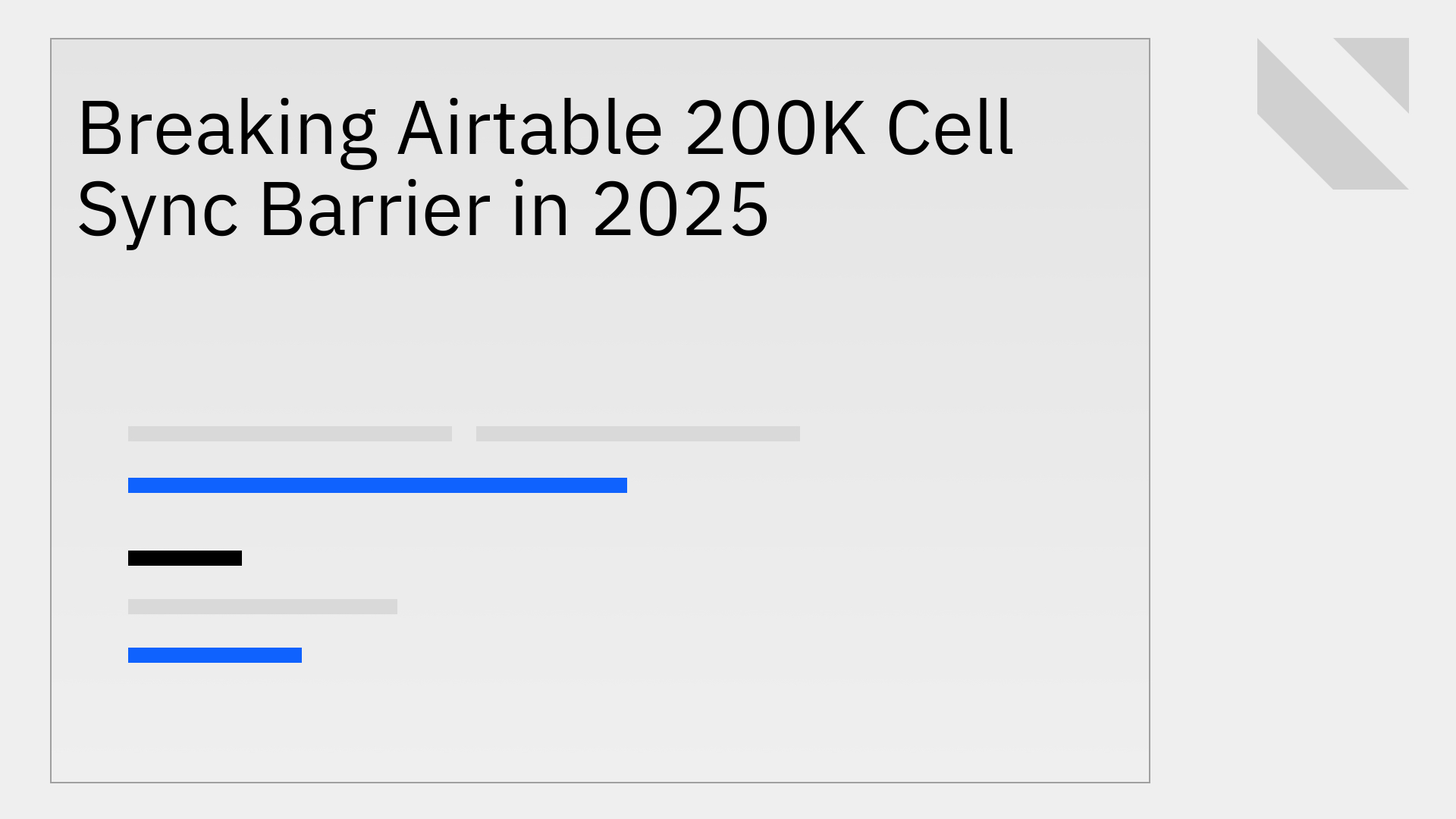
Airtable is a powerful tool for building flexible applications and managing operational data. However, as organizations scale their use of the platform, they inevitably encounter significant technical limitations, particularly with its native data synchronization capabilities. The most prominent of these is the 200,000 cell limit for two-way syncs, a barrier that severely restricts data volume and hinders the development of a scalable, single source of truth.
While Airtable’s native sync is functional for small-scale use cases, it lacks the scalability, reliability, and real-time performance required for mission-critical operations. This article examines the technical constraints of Airtable's sync and presents Stacksync as the definitive solution for breaking these barriers and achieving true, enterprise-grade bi-directional data synchronization.
For any data-driven organization, relying on Airtable's native sync capabilities introduces several operational risks and technical bottlenecks. As data volume grows beyond simple project management, these limitations become critical points of failure.
Airtable explicitly blocks views exceeding 200,000 cells (e.g., 10,000 records with 20 fields) from being used as a source for two-way sync. This hard limit forces engineering and RevOps teams into inefficient workarounds, such as splitting data across multiple bases, which fragments data and breaks the concept of a unified data model [3]. For businesses experiencing growth, this isn't a scalable strategy; it's a technical roadblock.
Beyond the cell sync limit, Airtable's architecture is constrained by record and API quotas tied to its pricing plans.
Airtable's sync architecture imposes further limitations that prevent robust, automated workflows:
Stacksync is purpose-built to eliminate the technical limitations inherent in native SaaS integrations. Our platform provides a robust, scalable, and real-time Airtable two-way sync solution that empowers organizations to build truly unified data ecosystems.
With Stacksync, the 200,000 cell limit is irrelevant. Our platform is architected to handle millions of records from day one, syncing entire tables or bases without restrictions. Whether you need to sync Airtable with a PostgreSQL database, Snowflake data warehouse, or Salesforce CRM, Stacksync ensures your entire dataset is always available and consistent across systems. There are proven ways to sync data that move beyond these native limitations.
Unlike the delayed, one-way-at-a-time process of Airtable's native feature, Stacksync offers genuine bi-directional sync in milliseconds.
Stacksync is designed for enterprise-grade reliability, removing the maintenance overhead from your teams.
While Airtable provides a flexible interface for data management, its native sync capabilities are not designed for the demands of a growing business. The 200,000-cell barrier, coupled with API and performance limitations, creates a technical ceiling that forces inefficient compromises and puts data integrity at risk.
Stacksync provides the only path forward for organizations that need to integrate Airtable at scale. By offering unlimited, real-time, and truly bi-directional synchronization, our platform transforms Airtable from a siloed application into a fully integrated component of your modern data stack. Stop building workarounds and start building scalable, reliable data workflows.
Ready to break free from Airtable's sync limitations? Book a demo with one of our engineers and see how Stacksync can power your operational data at scale.